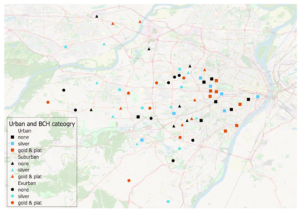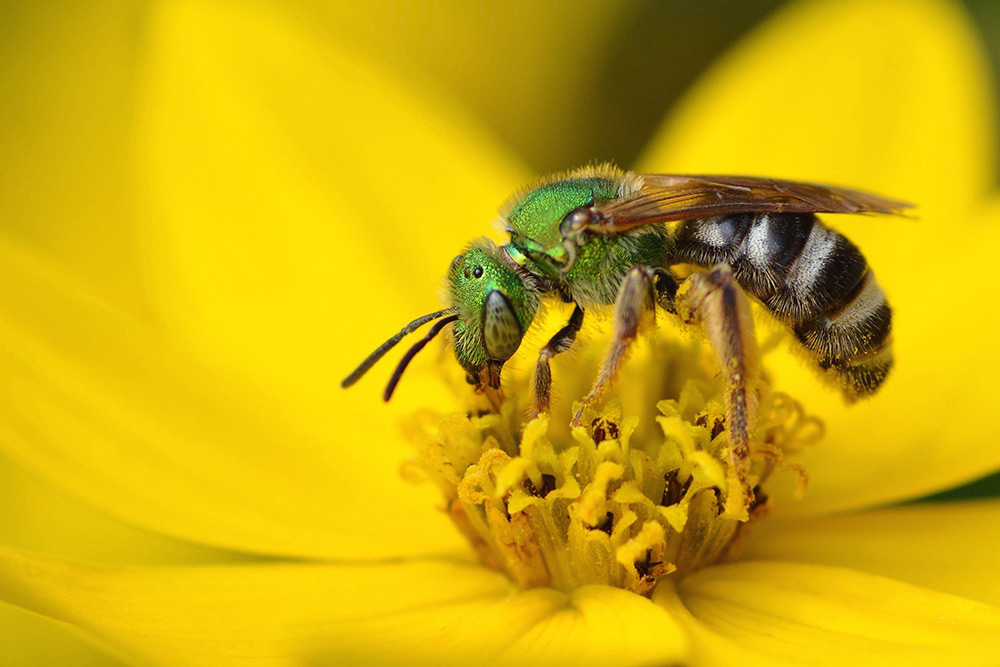Spring has officially sprung and our world is a very different place since we last updated you about the exciting new partnership forged between St. Louis Audubon, Saint Louis University and the Living Earth Collaborative. If you recall from the September 19 newsletter, researchers Dr. Sacha Heath, Dr. Gerardo Camilo, Nina Fogel, and Trey Hull have set out to investigate the many factors that influence biodiversity within your yard and neighborhood by examining homes enrolled in St. Louis Audubon’s Bring Conservation Home.
As many of you have had to adjust to a new normal, we have as well including altering our research plans. To varying degrees, we are forging ahead with some exciting new research this summer, taking all of the social-distancing and disinfectant precautions necessary to keep everyone safe. We’d like to tell you about some of what we are doing!
First of all, 395 of you responded to our initial survey! We were blown away by your enthusiasm and excitement for our research and we have really enjoyed communicating with you along the way. So from the bottom of our hearts, Thank You!
The information you have provided us about your knowledge of the biodiversity in your backyard, and the various yard activities you undertake will certainly be used in our final analyses. Unfortunately, this is many more yards than any of us are able to logistically accommodate for the field component of our work, and we have had to select a smaller sample of yards to work with in more detail. Here is some of what we are up to this summer:
Birds, bats, and frogs!
Living Earth Collaborative postdoctoral fellow Dr. Sacha Heath had been planning and preparing for over a year to begin studying birds, their predatory behaviors, and their own predation risk, in backyards during spring, summer, and fall of 2020. Due to COVID-19, however, she is switching gears to employ a no-contact, socially-distanced, stay-at-home sampling regime. With the help of landowners who have agreed to participate, she will be deploying AudioMoth acoustic sampling devices in 63 yards stratified by Bring Conservation Home certification and the intensity of urbanization in the surrounding landscape (Figure 1).

Figure 1. Yards selected for the bird, bat, and frog bioacoustics study.
By the beginning of June, Sacha will porch-deliver the recording devices pre-programmed to record intermittently during dawn (for birds and frogs), dusk (for bats) and during nighttime (for owls, nightjars, and other nighttime critters). Landowners have volunteered to place the devices, turn them on, and let the recording begin! Sacha will then retrieve the devices a month later, download the data, and begin the process of using cloud computing, machine learning, and community scientists to help identify the (hopefully) thousands of recordings made by animals in your backyards!
Bees!
PhD student Nina Fogel has been prepping to sample bee diversity in yards this summer. She will sample bees once a month in 65 gardens across the region. She will also collect data on the number and type of flowers in bloom to investigate how local resources as well as the level of urbanization influence patterns of bee diversity.
In addition, she has been working with Dr. Nicole Miller-Struttmann at Webster University to put on Shutterbee, a citizen science project, which trains people to take photos of bees in their yard.
75 Bring Conservation Home enrollees and 150 other people from the community participated in the online training last week. We were not expecting such an enthusiastic response and it was a delight to introduce people to the project and answer all of the participants’ questions. Shutterbee will investigate patterns of bee diversity including looking at plant-pollinator interactions and studying the effectiveness of photo surveys to capture bee diversity. Unfortunately, we cannot add more participants this year, but we will put out a call at the start of next summer if you are interested in joining the project.
Mosquitoes!
Trey Hull is a PhD student and is excited to be studying mosquitoes and their environment in the backyards of 45 Bring Conservation Home members. Starting in June, Trey will be visiting yards and setting traps to collect and study Culex spp mosquitoes, one of the main genera of mosquitoes in our area that pose a risk to public health. Although many people generally think of these mosquitoes as nuisance pests, they also have the potential to spread several diseases such as the West Nile virus and St. Louis encephalitis virus. Trey is hoping that this research will help provide a better understanding of how small differences in the biodiversity of local environments in home gardens can affect the ability of mosquitoes to breed and live in residential areas.




